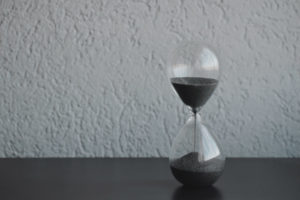
I believe that one should prepare tea in a manner that results in the desired taste.
You have to find the right balance between leaf amount, water volume, water temperature, and infusion time.
Let’s see how we can play around with the brewing parameters to find what works best for us.
Word of caution: if you’re just starting out, it’s best to just follow the guidelines.
Once you’re comfortable with the basics, then you can start experimenting.
Leaf amount
This is usually measured in grams.
Each tea has a different leaf to water ratio.
For example, gyokuro needs less water than bancha.
If you want a stronger tea, you can use more tea leaves and/or less water.
I have never heard of people adding more tea leaves for later infusions. So the custom is to keep the initial leaf amount constant.
Note that if you are making tea for many people at once, you may consider lowering the leaf amount per person.
Let me explain. I prepare sencha for myself with with 4 grams of tea leaves and 60 ml (2 oz) of water.
But when I want to serve that same sencha for 5 or more people, I would use 2 grams of tea per person and the same amount of water.
This is recommended by the Nihoncha Instructor Association.
You’ll see that if you use the full amount of grams per person and serve for more people, the green tea will be stronger than if you had just brewed the tea for yourself.
One explanation is that a small amount of water cools quicker than a bigger amount of water.
So tea for more people will be infused at a higher overall temperature, which might affect the final taste of the green tea.
Another aspect is that tea leaves absorb water. About 4 times their weight.
When you prepare tea for more people in the same teapot, a lot of the water will be absorbed by the tea leaves.
For one person, the amount of absorbed water is barely noticeable. Bur for many people, it ends up being a larger amount than one would think.
You can add more water initially to compensate, but this isn’t an option if your teapot is already full.
Water volume
Likewise, you can adjust the water volume and keep the leaf amount fixed.
Note that this isn’t exactly proportional.
You can’t expect to double the amount of water, and then have the same taste by keeping the same leaf amount and just doubling the infusion time.
The first infusion of many green teas is stronger in umami taste, for example. You can tell that for the next infusions the overall taste is much different.
Another aspect is doing a cold infusion.
When you will be steeping for 8 hours in the refrigerator, one tends to use more water because it will be just one long infusion instead of multiple ones.
Water temperature
Increasing the water temperature speeds up the infusion.
If you are using boiling water, you need less infusion time than if you were using lukewarm water.
For delicate green teas, a temperature that is too high will result in excessive bitterness and astringency.
But teas such as genmaicha and bancha are best brewed with boiling water for a short period of time.
Besides cold infusions, one gets to play with temperature when making multiple steepings of the same tea.
I like to brew the last infusion of a sencha with boiling water for a short period of time. The idea is to take out all of the remaining flavor of the tea leaves before discarding them.
Infusion time
For successive infusions of teas such as sencha, I shorten the time.
Let me explain how I normally prepare 4 infusions of a fukamushi sencha: 40 seconds, 20 seconds, 10 seconds, and a few seconds for the last infusion with boiling water.
You don’t have to do it that way, it’s just what suits my taste.
Another thing to keep in mind, is that the tea leaves keep infusing while you serve the tea.
For example, if you have to serve many people and take a minute serving everyone, it’s not the same as if you were just serving one tea and took only 10 seconds.
So you might also want to start serving before the desired infusion time is up.
I hope that this post wasn’t too confusing.
In summary, you are free to experiment with your tea parameters.
